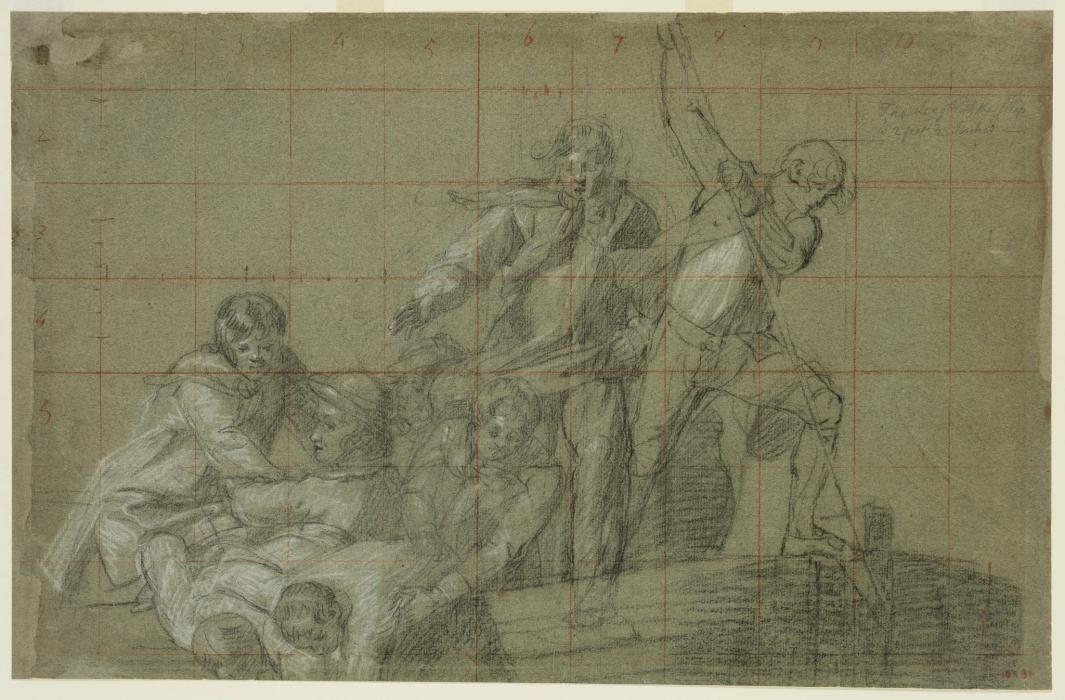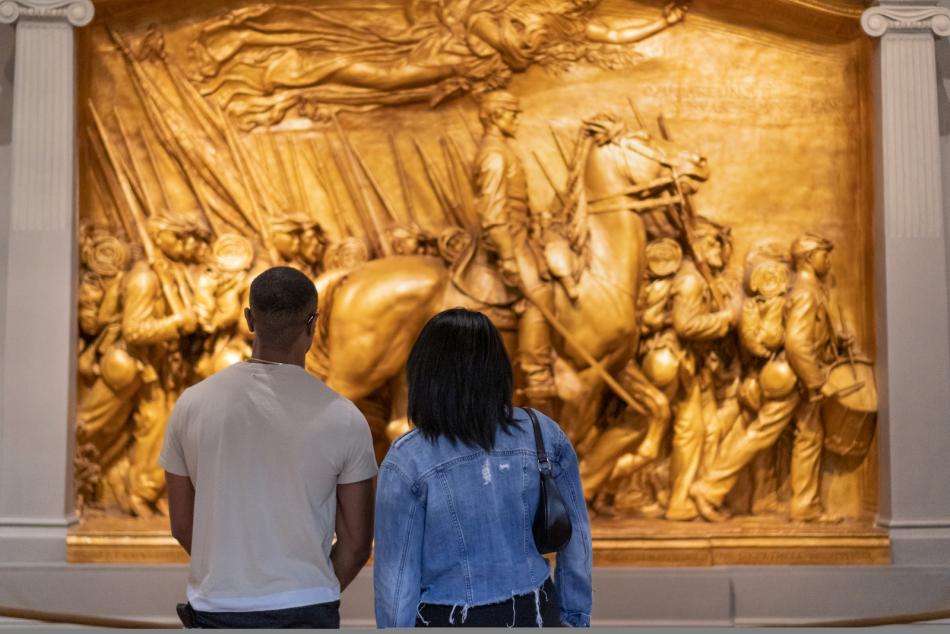Centering the Black Sailor in Copley’s "Watson and the Shark"

This painting by John Singleton Copley now carries the deceptively simple title Watson and the Shark, which tells a singular story about a real event: young Brook Watson’s harrowing rescue from the jaws of a ravenous shark in Havana Harbor in 1749.
But as the work’s first title—A boy attacked by a shark and rescued by some seamen in a boat—indicates, there are other stories at play here besides Watson’s. The lives of the men attempting to save the boy also hang in the balance. Chief among them is the Black sailor who presides over the scene from near the top of the canvas, silhouetted by the sky.

The Black Sailor at the Top of the Pyramid
The Black man stands upright at the top of the pyramid-like composition of this busy harbor scene. Balancing the boat, he plays a prominent role in the action unfolding around him. He has already thrown the crucial lifeline to the boy in the water below. The Black crewman and Watson dramatically reach their right arms toward each other, their open hands framing and animating the heart of the painting.
The model for the Black sailor was clearly a distinct individual, but his identity remains unknown. Nevertheless, we do know that any Black sailor in Cuba in the mid-18th century, whether indentured, enslaved, or free, would have led a dangerous and precarious life.

John Singleton Copley, Head of a Negro, 1777 or 1778, oil on canvas. Detroit Institute of Arts, Founders Society Purchase, Gibbs-Williams Fund, 52.118.
Possible model for the Black sailor in John Singleton Copley’s Watson and the Shark
Black Bodies in the Middle Passage and Havana Harbor
Just as the Black man is Watson’s main lifeline, so too were Black bodies the lifeblood of the transatlantic slave trade and colonial economic success.
The merchant ships shown in the harbor indicate the ubiquitous power of imperial colonial commerce. The triangular trade was at its height when the painting was created in 1778: Europeans went to Africa to exchange manufactured goods for enslaved people, transported the enslaved Africans across the Atlantic in the Middle Passage to the West Indies, sold them in the colonies, and brought raw materials like sugar and coffee back to Europe. Nearly three-fifths of the people trafficked during the transatlantic trade were transported and sold during the 18th century.
Working on a boat in Havana Harbor in 1749, the Black sailor would have been surrounded by tens of thousands of captive Africans and no doubt would have known of their terrifying journeys across the Atlantic. Enslavers were known to cast people who became sick or who died from the brutal conditions of the Middle Passage into the ocean, leaving them to be devoured by sharks. Many more met the same tragic end by throwing themselves at the mercy of the sea, taking their own lives rather than being subjected to more of the slave trade’s terrors.
A Black sailor called on to rescue a white boy from the shark-infested waters would have been all too aware that no such mercy was being afforded his fellow Africans.

In the original sketch, the sailor at the apex of the painting is a white man. The change to a man of African descent points to Copley being intentional about the Black sailor.
John Singleton Copley, Rescue Group, between 1777 and 1778, black chalk heightened with white, squared for transfer in red chalk, on green gray laid paper, Detroit Institute of Arts, City of Detroit Purchase, 48.203.
Copley’s Awareness of Black Labor on the Eve of the American Revolution
In a sketch he drew before creating the painting, Copley had made the sailor at the top of his composition a white man. When he painted the figure as a man of African descent instead, Copley acknowledged the importance of Black labor in the success of the colonies as the Americas inched closer to revolution. As political tensions grew, the artist wrote about the inevitable horrors of war.
Copley was a friend to both British loyalists and rebels. He painted portraits of rich Bostonians like Paul Revere, but also married into the Clarke merchant family. His father-in-law, Richard Clarke, supported the British, and the family left for London in 1774, on the eve of the American Revolution. Copley never returned to the Americas.

And What Happened to Watson?

Sir Brook Watson at 63 years old.
Robert Dighton Jr, Sir Brook Watson, 1st Bt, published August 1803, hand-coloured etching, NPG D4645, © National Portrait Gallery, London
Brook Watson survived his ordeal and eventually became a prominent merchant who gained his wealth through the transatlantic slave trade. In 1788, Watson (now 53), spoke in the British Parliament against abolishing the slave trade. Watson’s main concern was that abolition would ruin the West Indies market for refuse fish, which he sold as food for enslaved African people.
He actively promoted his own story as a message about personal courage and heroism when he gave this painting to a boys’ school in 1803. He made sure that the school displayed it with a plaque describing his rescue and forever memorializing his encounter.
In focusing on Watson’s fate, art historians have often failed to see that the painting does more than memorialize the encounter between a youth and a shark. While the grand painting captures a specific moment in Brook Watson’s story, it also calls on viewers to consider the reality of Black life during colonial times. It depicts the humanity of a Black sailor helping to save someone who, if their roles were reversed, may not have reached out to save him.
You may also like

Article: Ten Artworks to Understand Early United States History
From the Native peoples lobbying to keep their homelands to immigrants facing challenges in their new home, works from our collection help us understand our nation’s beginnings.

Article: Look to the Light: A Reflection on Aaron Douglas’s “Into Bondage”
On Juneteenth, Aaron Douglas’s “Into Bondage” prompts reflections on the way forward through oppression and anguish.


